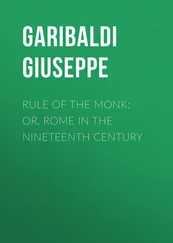Jules Verne - Celebrated Travels and Travellers, Part 3. The Great Explorers of the Nineteenth Century
Здесь есть возможность читать онлайн «Jules Verne - Celebrated Travels and Travellers, Part 3. The Great Explorers of the Nineteenth Century» — ознакомительный отрывок электронной книги совершенно бесплатно, а после прочтения отрывка купить полную версию. В некоторых случаях можно слушать аудио, скачать через торрент в формате fb2 и присутствует краткое содержание. Жанр: foreign_language, foreign_prose, на английском языке. Описание произведения, (предисловие) а так же отзывы посетителей доступны на портале библиотеки ЛибКат.
- Название:Celebrated Travels and Travellers, Part 3. The Great Explorers of the Nineteenth Century
- Автор:
- Жанр:
- Год:неизвестен
- ISBN:нет данных
- Рейтинг книги:5 / 5. Голосов: 1
-
Избранное:Добавить в избранное
- Отзывы:
-
Ваша оценка:
- 100
- 1
- 2
- 3
- 4
- 5
Celebrated Travels and Travellers, Part 3. The Great Explorers of the Nineteenth Century: краткое содержание, описание и аннотация
Предлагаем к чтению аннотацию, описание, краткое содержание или предисловие (зависит от того, что написал сам автор книги «Celebrated Travels and Travellers, Part 3. The Great Explorers of the Nineteenth Century»). Если вы не нашли необходимую информацию о книге — напишите в комментариях, мы постараемся отыскать её.
Celebrated Travels and Travellers, Part 3. The Great Explorers of the Nineteenth Century — читать онлайн ознакомительный отрывок
Ниже представлен текст книги, разбитый по страницам. Система сохранения места последней прочитанной страницы, позволяет с удобством читать онлайн бесплатно книгу «Celebrated Travels and Travellers, Part 3. The Great Explorers of the Nineteenth Century», без необходимости каждый раз заново искать на чём Вы остановились. Поставьте закладку, и сможете в любой момент перейти на страницу, на которой закончили чтение.
Интервал:
Закладка:
Up to the time of Burckhardt no such detailed account of Mecca and her sanctuary had been given to the world. For this reason we shall insert extracts from the original narrative; extracts which might indeed be multiplied, for they include circumstantial accounts of the sacred well, called Zemzem, water from which is considered as an infallible remedy for every complaint. The traveller speaks also of the "Gate of Salvation," of the Makam Ibrahim, a monument containing the stone upon which Abraham sat when he was engaged in building the Kaaba, and where the marks of his knees may still be seen, and of all the buildings enclosed within the temple precincts.
Judging from Burckhardt's minute and complete description, these spots still retain their former physiognomy. The same number of pilgrims chant the same songs; the men only are no longer the same. His accounts of the feast of the pilgrimage and the holy enthusiasm of the faithful, are followed by a picture which brings before us, in the most sombre colours, the effects of this great gathering of men, attracted from every part of the world.
"The termination of the pilgrimage," he says, "lends a very different aspect to the mosque. Illness and death, consequent upon the great fatigues undergone during the voyage, are accelerated by the scanty covering afforded by the Ihram, the unhealthy dwellings of Mecca, the bad food, and frequent absolute dearth of provisions. The temple is filled with corpses brought thither to receive the prayers of the Iman, or with sick persons who insist upon being carried, as their last hours approach, to the colonnade, hoping to be saved by the sight of the Kaaba, or in any case to have the consolation of expiring within the sacred precincts. One sees poor pilgrims, sinking under illness and hunger, dragging their weary bodies along the colonnade; and when they no longer have the strength to stretch out a hand to the passer-by, they place a little jar beside the mat upon which they are laid, to receive what charity may bestow upon them. As they feel the last moment approach, they cover themselves with their ragged clothes, and very often a day passes before it is ascertained that they are dead."
We will conclude our extracts from Burckhardt's account of Mecca with his opinion of the inhabitants.
"Although the natives of Mecca possess grand qualities, although they are pleasant, hospitable, cheerful and proud, they openly transgress the Koran by drinking, gambling, and smoking. Deceit and perjury are no longer looked upon as crimes by them; they do not ignore the scandal such vices bring upon them; but while each individually exclaims against the corruption of manners, none reform themselves."
Upon the 15th of January, 1815, Burckhardt left Mecca with a caravan of pilgrims on their way to visit the tomb of the prophet. The journey to Medina, like that between Mecca and Jeddah, was accomplished at night, and afforded little opportunity for observation. In the winter night-travelling is less comfortable than travelling by day. A valley called Wady-Fatme, but generally known as El-Wadi, was crossed; it abounded in shrubs and date-trees, and was well cultivated in the eastern portion. A little beyond it lies the valley of Es-Ssafra, the market of the neighbouring tribes and celebrated for its plantations of dates.
The traveller relates that "The groves of date-trees extend for nearly four miles, and belong to the natives of Ssafra as well as to the Bedouins of the neighbourhood, who employ labourers to water the ground, and come themselves to reap the harvest. The date-trees pass from one person to another in the course of trade; they are sold separately. A father often receives three date-trees as the price of the daughter he gives in marriage. They are all planted in deep sand brought from the middle of the valley, and piled up over their roots; they ought to be renewed every year, and they are generally swept away by the torrents. Each little plot is surrounded by a wall of mud or stone, and the cultivators live in hamlets or isolated cabins among the trees. The principal stream flows through a grove near the market; beside it rises a little mosque, shaded by large chestnuts. I had seen none before in the Hedjaz."
Burckhardt was thirteen days in reaching Medina. But this rather long journey was not lost time to him; he collected much information about the Arabs and the Wahabees. At Medina, as at Mecca, the pilgrim's first duty is to visit the tomb and mosque of Mahomet; but the ceremonies attending the visit are much easier and shorter, and the traveller performed them in a quarter of an hour.
Burckhardt's stay at Mecca had already been prejudicial to him. At Medina he was attacked by intermittent fever, which increased in violence, and was accompanied by violent sickness. This soon so reduced him, that he could no longer rise from his carpet without the assistance of his slave, "a poor fellow who by nature and habit was more fit to tend camels than to take care of his worn-out and enfeebled master."
Burckhardt being detained at Medina for more than three months by a fever, due to bad climate, the detestable quality of the water, and the prevalence of infectious illnesses, was forced to relinquish his project of crossing the desert to Akabah, in order to reach Yanibo as quickly as possible, and from thence embark for Egypt.
"Next to Aleppo," he says, "Medina is the best-built town I have seen in the East. It is entirely of stone, the houses being generally three stories high, with flat tops. As they are not whitewashed, and the stone is brown in colour, the streets, which are very narrow, have usually a sombre appearance. They are often only two or three paces wide. At the present time Medina looks desolate enough; the houses are falling into ruins. Their owners, who formerly derived a considerable profit from the inroad of pilgrims, find their revenues diminishing, as the Wahabees forbid visitors to the tomb of the prophet, alleging that he was but a mere mortal. The possession which places Medina on a par with Mecca is the Grand Mosque, containing the tomb of Mahomet. This is smaller than that at Mecca, but is built upon the same plan, in a large square courtyard, surrounded on all sides by covered galleries, and having a small building in the centre. The famous tomb, surrounded by an iron railing painted green, is near the eastern corner. It is of good workmanship, in imitation of filagree, and interlaced with inscriptions in copper. Four doors, of which three lead into this enclosure, are kept constantly shut. Permission to enter is freely accorded to persons of rank, and others can purchase permission of the principal eunuchs for about fifteen piasters. In the interior are hangings which surround the tomb, and are only a few feet from it." According to the historian of Medina, these hangings cover a square edifice, built of black stones, and supported upon two columns, in the interior of which are the sepulchres of Mahomet and his two eldest disciples, Abou-Bekr and Omar. He also states that these sepulchres are deep holes, and that the coffin which contains the ashes of Mahomet is covered with silver, and surmounted by a marble slab with the inscription, "In the name of God, give him thy pity." The fables which were spread throughout Europe as to the tomb of the prophet being suspended in mid air, are unknown in the Hedjaz. The mosque was robbed of a great part of its treasures by the Wahabees, but there is some ground for believing that they had been forestalled by the successive guardians of the tomb.
Many other interesting details of Medina, and its inhabitants, surroundings, and the haunts of pilgrims, are to be found in Burckhardt's narrative. But we have given sufficient extracts to induce the reader who desires further information respecting the manners and customs of the Arabs, which have not changed, to refer to the book itself.
Читать дальшеИнтервал:
Закладка:
Похожие книги на «Celebrated Travels and Travellers, Part 3. The Great Explorers of the Nineteenth Century»
Представляем Вашему вниманию похожие книги на «Celebrated Travels and Travellers, Part 3. The Great Explorers of the Nineteenth Century» списком для выбора. Мы отобрали схожую по названию и смыслу литературу в надежде предоставить читателям больше вариантов отыскать новые, интересные, ещё непрочитанные произведения.
Обсуждение, отзывы о книге «Celebrated Travels and Travellers, Part 3. The Great Explorers of the Nineteenth Century» и просто собственные мнения читателей. Оставьте ваши комментарии, напишите, что Вы думаете о произведении, его смысле или главных героях. Укажите что конкретно понравилось, а что нет, и почему Вы так считаете.












